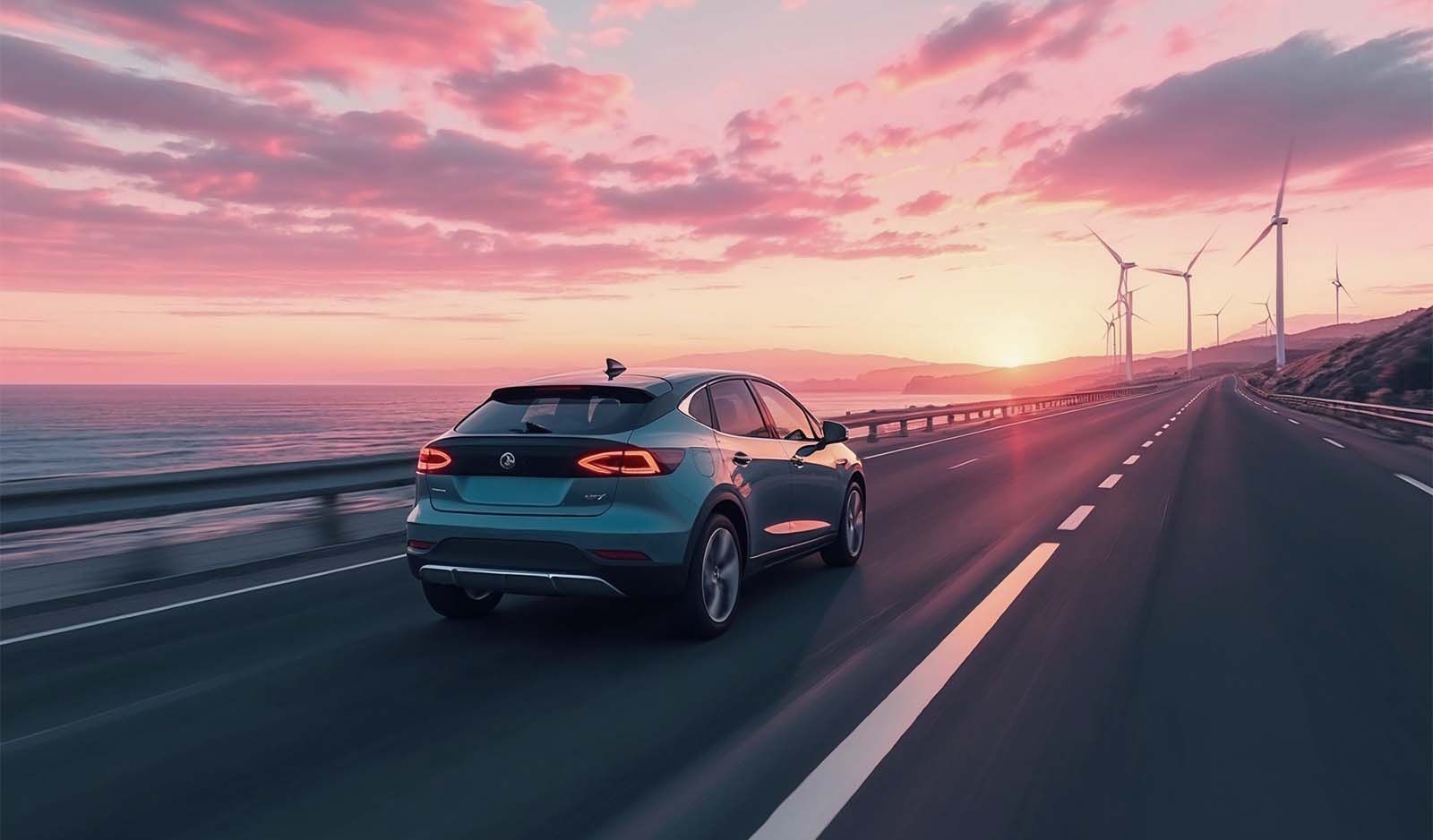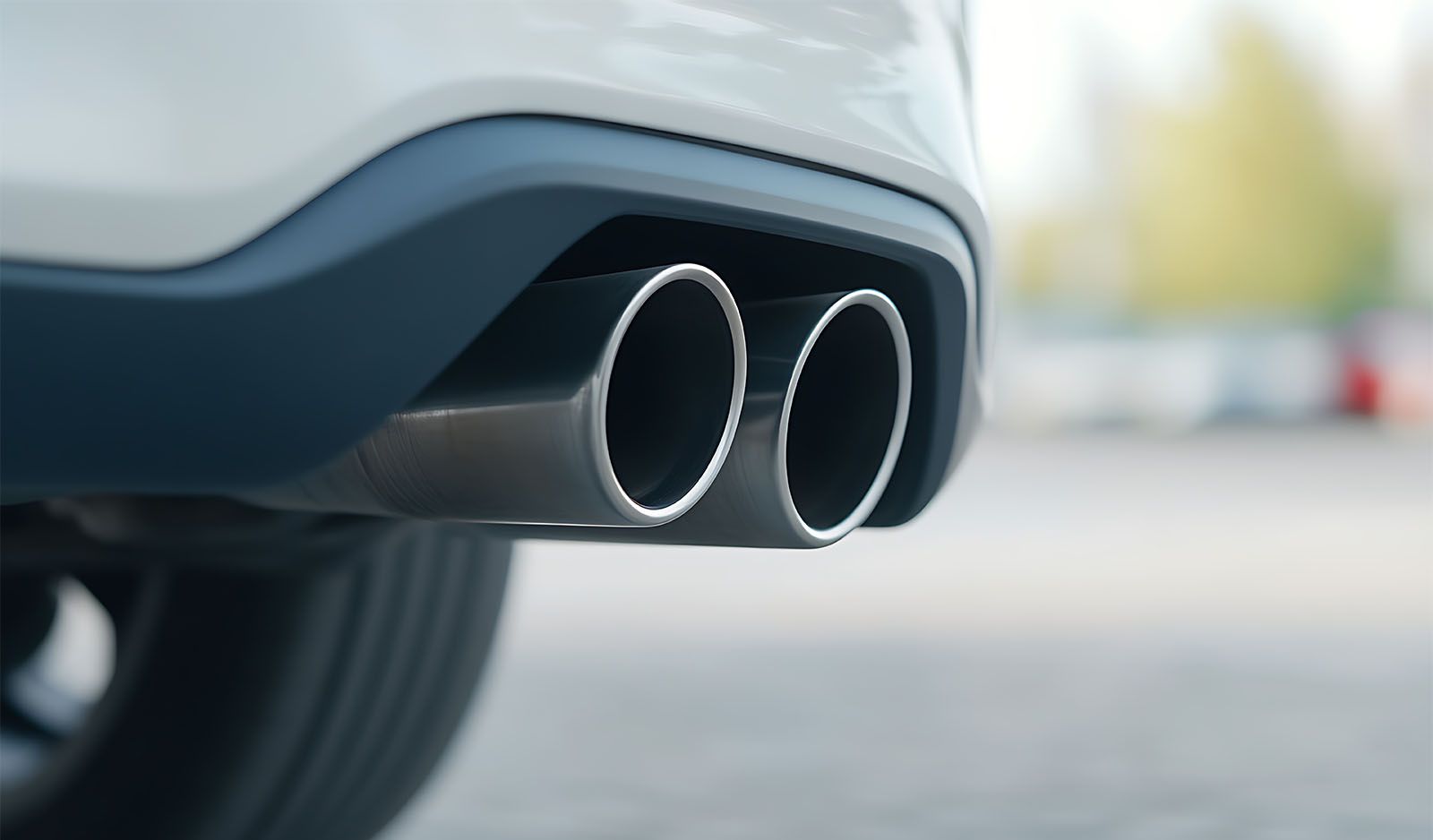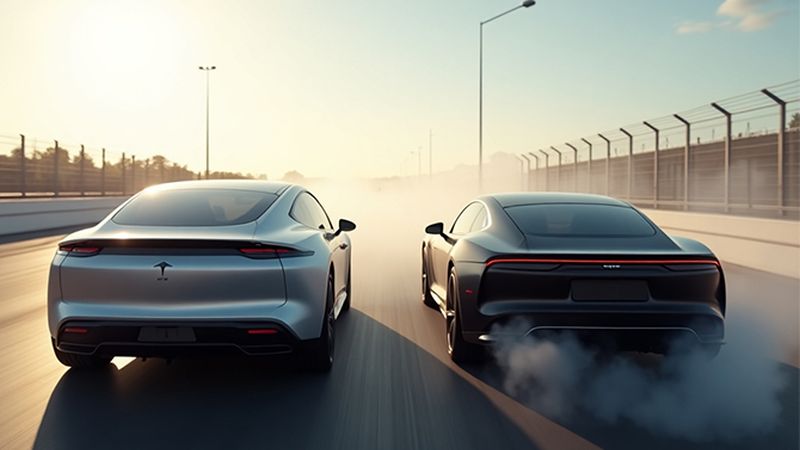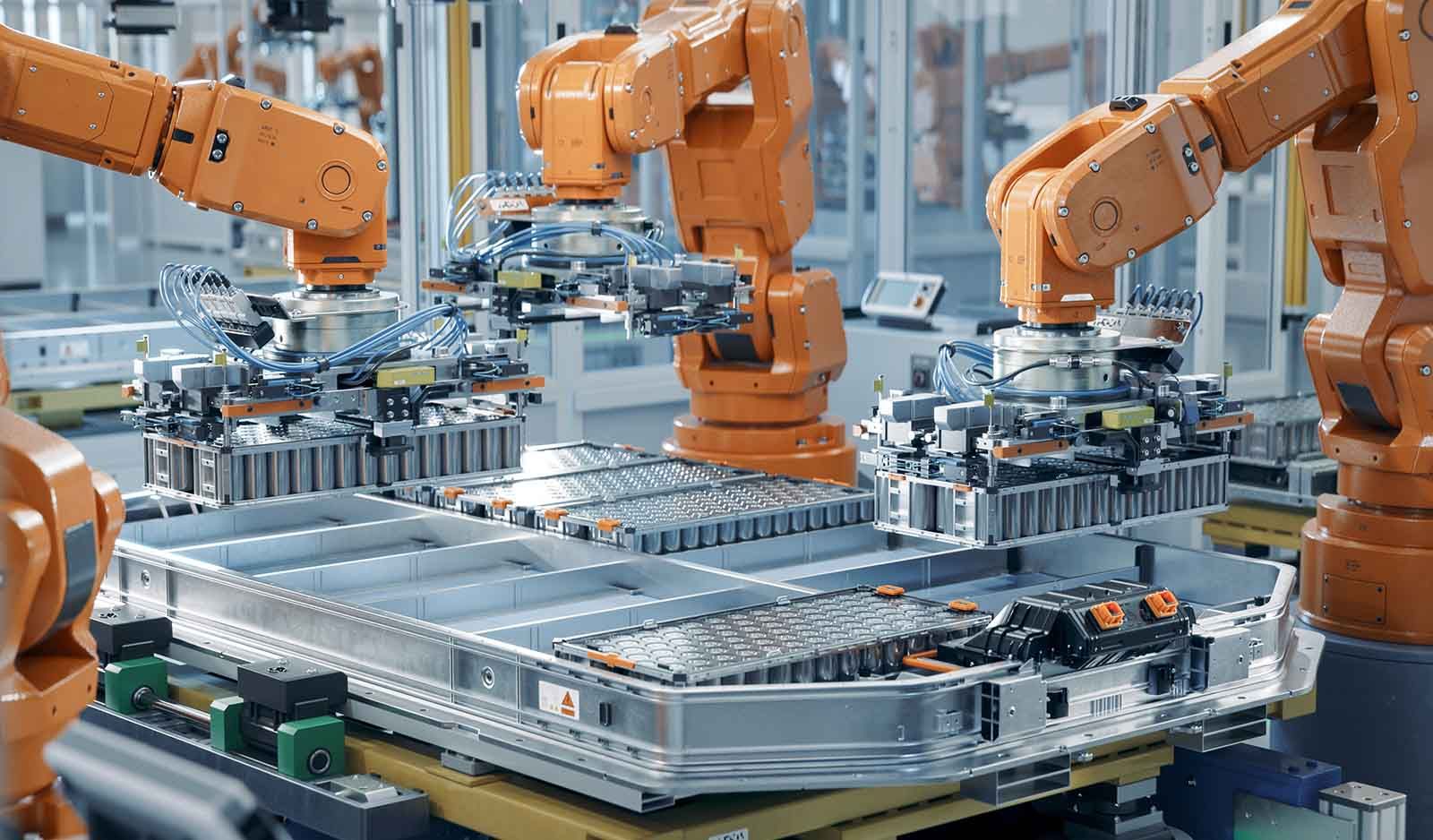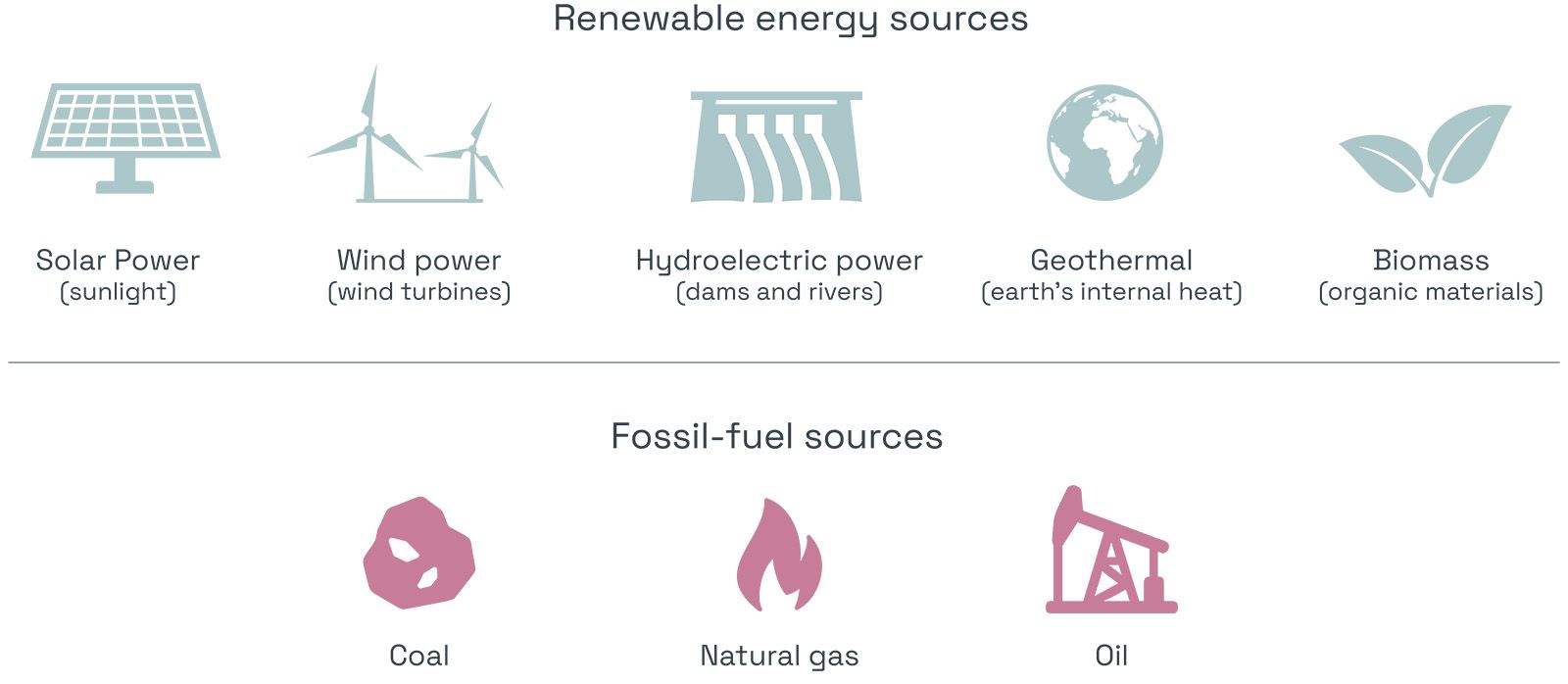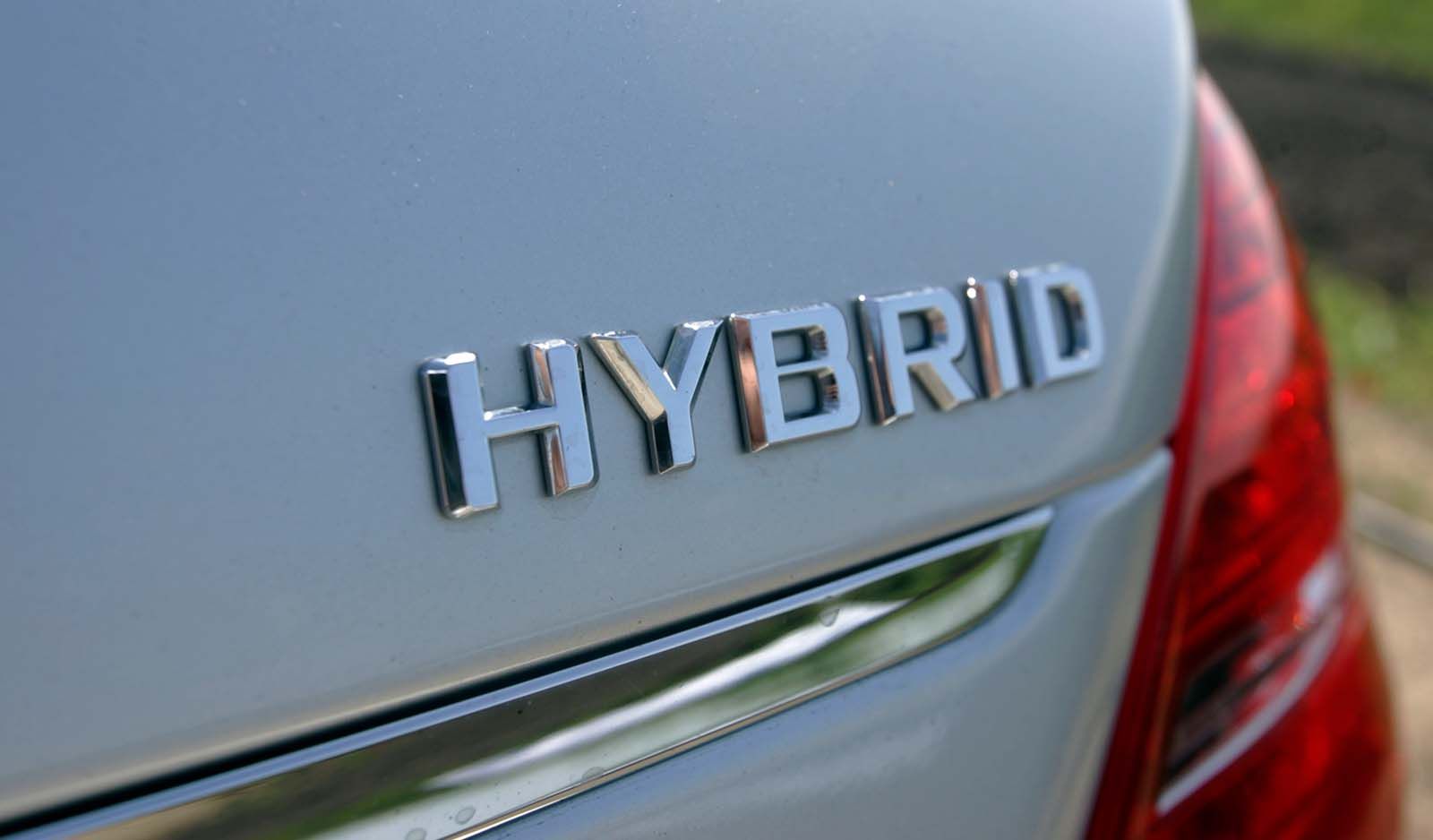Are Electric Cars Better for the Environment?
Are electric cars better for the environment?
Yes, electric cars (EVs) are far more eco-friendly than petrol and diesel cars.
The average EV driven in the European Union (EU) has nearly four times less life-cycle emissions than petrol and diesel cars, according recent data from The International Council on Clean Transportation.
EVs do have a more carbon-intensive manufacturing process, largely due to the lithium-ion battery. But they quickly claw back the ‘carbon gap’ once on the road.
That’s because the internal combustion engine (ICE) of a petrol and diesel car is powered by fossil fuels – the primary driver of global climate change. Worldwide, burning fossil fuels accounts for nearly 90% of carbon dioxide (CO2) emissions, and 75% of greenhouse gasses, according to a UN policy report on climate change.
An ICE vehicle burns thousands of gallons of fuel over its lifetime (also contributing to air pollution). Plus, fossil fuels affect the environment before even reaching the pump: the drilling, refinement and transportation of oil is hugely energy-intensive, and damages delicate ecosystems.
Compare that to an EV, which emits no carbon emissions while driving, and is therefore much more environmentally friendly. Of course, some of the electricity used to charge it may be generated by fossil fuels. But as more renewable energy sources are used to produce green electricity, the lifetime emissions gap between EVs and ICEs will only widen.
Are electric vehicles more energy efficient than petrol and diesel cars?
The way EVs convert energy into motion is much more energy efficient than petrol and diesel cars.
An electric motor directly converts electrical energy into motion (mechanical energy) with very little waste. Typically, 80-90% of the energy from the battery actually moves the car, according to automotive manufacturer Smart.
You can also compare the lifecycle emissions of ICE and electric vehicles by visiting the IEA website. Here you can see how the effect of changing variables such as vehicle size, driving distance and fuel type impacts the environment.
Petrol engines burn fuel to create heat, which is then converted into motion. But only about 20-30% of the energy produced moves the car – most of it is lost as heat, noise and friction.
Lifecycle carbon emissions: EVs v petrol and diesel cars
Let’s look in more detail at the comparable emissions of electric and ICE vehicles over their full lifecycle – from manufacture to driving and disposal.
Car manufacture emissions
At the moment, the manufacturing process of a traditional ICE vehicle has less impact on the environment than that of an electric car. This is largely due to the energy-intensive process of making the electric car batteries.
But battery technology is moving fast. Researchers are looking into greener alternatives, such as lithium-iron-phosphate (LFP) batteries, sodium-ion batteries (SIBs), and solid-state batteries (SSBs)
Driving emissions
Battery electric vehicles (BEVs) win hands down once they’re on the road – as they produce zero direct carbon emissions while driving.
Petrol cars, on the other hand, emit 165g of carbon dioxide per kilometre, and diesel cars 170g, according to EDF. This all adds up: domestic transport is responsible for more UK greenhouse gas emissions than any other sector (at 28%).
Even when you include the environmental cost of generating electricity, EDF puts EV driving emissions at just 50g of CO2 per kilometre. And these emissions will keep going down, as Great Britain is planning to generate 95% of electricity from clean sources by 2030.
Car disposal emissions
It’s widely recognised that there are carbon-saving and cost-saving benefits of recycling EV batteries, as scrapping them is unsustainable
According to Stanford University, recycling EV batteries emits 58-81% less greenhouse gases than mining and processing the chemicals to make new ones. It also uses 72-88% less water, and 77-89% less energy.
What’s the break-even point for EV emissions?
As soon as you start driving, EVs start to ‘pay back’ the additional carbon they produce during manufacture, compared to petrol and diesel cars. According to Carbon Brief, it takes less than two years for a typical EV to close the gap.
How does EV production impact the environment?
Through an electric car’s lifetime carbon impact is much lower than that of a petrol car, however EV production does leave a carbon footprint. Here’s a quick look at how – and what’s being done to reduce it:
EV battery manufacturing emissions
Mining and processing the materials needed to make an EV battery has an environmental cost. Recognising the environmental and economic costs, global policymakers are designing strategies to create circular supply chains for electric batteries. That means minimising waste and pollution, and keeping batteries and materials in use for as long as possible.
Energy consumption in EV production
Car manufacturers are keen to power their production lines with electricity generated from renewable sources to reduce their carbon footprint. By moving away from electricity generated from fossil fuels, they can reduce their impact on climate change.
How is driving an EV better for the environment?
There are many environmental benefits to driving an EV, compared to a petrol or diesel car – including reduced carbon emissions, air pollution and noise.
Let’s take a closer look at each area.
Why is renewable power key to an EV’s environmental benefits?
Driving an EV produces zero direct carbon emissions. And the environmental benefits are even greater when the electricity used to charge the car comes from renewable sources, not fossil fuels.
The good news here is that there’s been a rapid rise in global electricity generation from low-carbon sources.
About half of the electricity in Britain (51%) is generated from clean sources like solar, wind, hydro and nuclear, according to energy think tank Ember. The same goes for the EU (47%). In total, 40.9% of the world’s electricity supply was generated from clean power in 2024,
Although this means the world still relies on fossil fuels for 59% of its electricity, governments from around the world are stepping up. They’ve agreed to triple the capacity of renewable energy installations by 2030 (COP28 UN Climate Change Conference).
Renewable energy and fossil-fuel sources chart
Do electric cars help reduce air pollution in urban areas?
Yes, EVs help reduce air pollution – especially in towns and cities where traffic is heavy – as they don’t release any tailpipe emissions.
Petrol and diesel cars, on the other hand, release pollutants like nitrogen oxide, carbon monoxide and hydrocarbons. These toxins, which get trapped between buildings in urban areas, cause health and economic problems.
Petrol and diesel cars, on the other hand, release pollutants like nitrogen oxide, carbon monoxide and hydrocarbons. These toxins, which get trapped between buildings in urban areas, cause health and economic problems.
The Royal College of Physicians estimates that around 30,000 deaths annually in the UK are caused by air pollution. The report also puts a £27 billion price tag on air pollution each year, due to healthcare costs and productivity losses.
The health and economic benefits from reduced tailpipe emissions are vast, according to research from the University of Bath. Greater London has seen an 18.5% drop in sick leave, and a 10.2% decrease in respiratory problems, since low-emission zones were introduced.
The study also found improvements in happiness and life satisfaction, as well as annual public health savings of over £37 million.
Do electric vehicles reduce noise pollution?
Electric cars are much quieter than petrol or diesel vehicles, so they will help reduce noise pollution. In fact, they’re so quiet at low speeds that many countries, including the UK, require them to make an artificial noise to keep pedestrians safe.
As the shift towards EVs continues, the quieter environment will also bring health benefits. That’s becausenoise pollution can lead to stress and sleep problems, which in turn increases the risk of serious illness like heart disease and diabetes.
How does EV battery disposal impact the environment?
EV batteries are rarely thrown away – they’re too valuable. However, EV battery disposal will cause environmental harm without proper end-of-life management.
What happens to electric car batteries at end of life?
There’s a global push to improve end-of life management of EV batteries – especially given the rising popularity of electric cars.
Carmakers and policymakers alike stress the need to create a circular economy. That means extending the use of the battery and its components for as long as possible through reuse and recycling.
Petrol and diesel cars, on the other hand, release pollutants like nitrogen oxide, carbon monoxide and hydrocarbons. These toxins, which get trapped between buildings in urban areas, cause health and economic problems.
Carmakers and policymakers alike stress the need to create a circular economy. That means extending the use of the battery and its components for as long as possible through reuse and recycling.
Perhaps the most obvious way to reuse a battery is to repair, refurbish or re-manufacture it. Even when a battery’s capacity has dipped below 70% it can still be useful for another 10 years.
It can have a second life as a storage battery for solar or off-peak energy at home. Some of the innovative ways in which end-of-life EV batteries are being re-purposed on an industrial scale include:
- Toyota batteries being installed in Seven-Eleven Japan convenience stores to help power fridges
- Nissan batteries being used for energy storage at Rome airport, and as a back-up power system for the Amsterdam Arena
Are electric car batteries being recycled?
Yes, they are – and the drive to increase recycling capacity is growing.
Plans are being implemented globally to be ready for the first big wave of EV batteries reaching end-of-life in 2035.
It makes environmental and economic sense to recover and reuse the rare-earth components in EVs (95% of these materials can be extracted during recycling for future battery production).
Nobody wants them polluting the earth – and they’re too valuable to throw away. That’s why it’s estimated that global battery recycling will be worth $6.8 billion by 2028. China is well-placed to capitalise: its lithium-ion battery recycling capacity is about ten times that of the EU and US combined.
In the UK, the government has set out a Battery Strategy to create a globally competitive supply chain by 2030 – and to support the country’s net-zero ambitions.
Meanwhile, EU battery regulation is a key plank of the Union’s efforts to make Europe the world's first climate-neutral continent by 2050. The regulation promotes sustainable, circular, and safe EV batteries, and aims to facilitate their repurposing.
How long do electric car batteries last?
Most EV batteries now last 15–20 years, which means they’ll outlast the car itself! The figures come from a study by telematics company Geotab, which analysed the battery health of approximately 5,000 electric vehicles (EVs) in 2024.
The report showed that the average EV battery health has improved by 22% since 2019 – and that they generally degrade slower than drivetrain components in petrol and diesel cars.
Are hybrid cars good for the environment?
Plug-in hybrid electric vehicles (PHEVs) are better for the environment than petrol cars, but far from perfect.
A fully charged PHEV will cover about 30 to 75 miles on a full battery before switching to petrol. PHEVs also capture energy generated from breaking (known as regenerative breaking).
So they emit less carbon, and fewer pollutants, than ICE vehicles. But their carbon footprint remains closer to that of a petrol or diesel car than an EV.
PHEVs emit less carbon, and fewer pollutants, than ICE vehicles.
An EV emits 73% less carbon than an equivalent petrol model over its lifetime; when using only renewable electricity, the reduction is up to 78%. A PHEV emits 30% less. According to the International Council on Clean Transportation, a self-charging hybrid car (HEV), which can only travel a few miles on electricity, emits 20% less carbon than a petrol car
The sale of new hybrid cars will be banned in the UK from 2035.
Summary
- EVs are far more eco-friendly than petrol or diesel cars over their lifetime – due to fewer carbon emissions, and less air and noise pollution.
- EV manufacturing and disposal causes more emissions, largely due to the lithium-ion battery.
- However, EVs emit zero direct emissions when being driven, so they quickly pay back the additional carbon emitted during production.
- The carbon gap between EVs and petrol and diesel cars will grow as more electricity is generated from renewable sources.
- To further reduce EVs’ environmental impact, global policymakers and car manufacturers are improving battery recycling.

